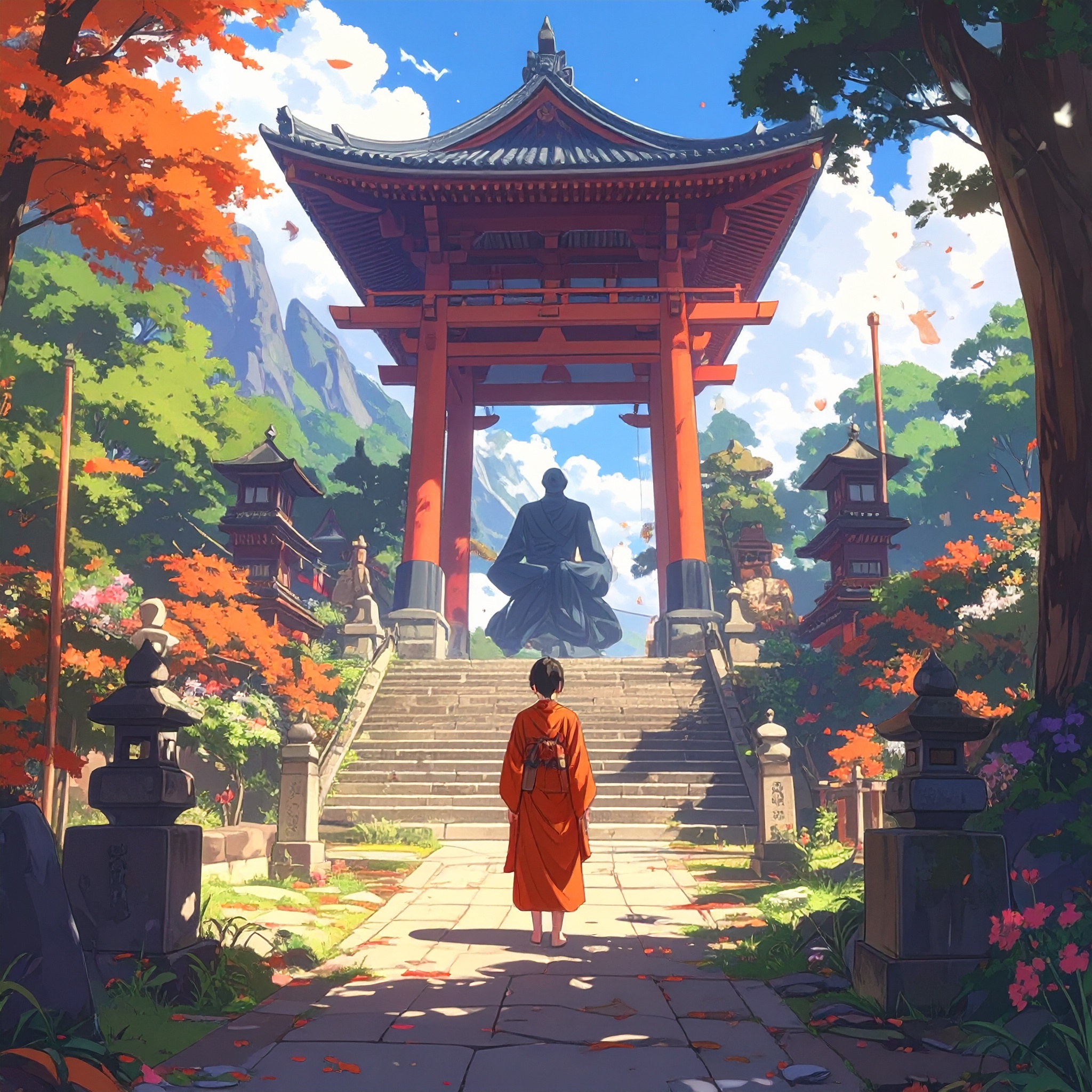In Japanese daily life, there is a quiet reverence for things unseen. Shaped by the overlapping influences of Shinto and Buddhism, Japanese culture does not demand a choice between the two; instead, people have long lived naturally in the space between them. Rather than strict doctrine, what emerges is a gentle sensitivity—a spiritual awareness akin to sensing a presence—that reflects a worldview where invisible forces are quietly acknowledged and respected.
Take, for example, the small shimenawa ropes or household kamidana (Shinto altars) placed near the entrance of many homes. These express lingering ties to Shinto, designating sacred spaces that are purified and honored during New Year’s and seasonal occasions. At the same time, ancestral tablets (ihai), family butsudan (Buddhist altars), and memorial customs such as Obon reflect the enduring influence of Buddhism—providing moments to remember and commune with departed loved ones. In everyday life, gods and buddhas coexist without conflict, each with their own role and presence.
What is especially fascinating is that these two faiths do not oppose each other in daily practice. People may visit a Shinto shrine for New Year’s blessings, hold Buddhist memorial services for ancestors, celebrate weddings with Shinto rites, and conduct funerals in Buddhist tradition. This “functional faith” differs greatly from Western religious frameworks that emphasize exclusive belief. In Japan, religion flows as a natural extension of life and feeling—a cultural style rooted in harmony, not absolutes.

This sense of living between also extends to how Japanese people relate to nature. Mountains, forests, stones, even flowing water—these are often perceived as holding a spirit, a presence. Through the gates of a shrine or the humble form of a roadside altar, people offer a quiet bow—not from firm belief or disbelief, but from a readiness to acknowledge that something sacred might be there. It is a posture not of certainty, but of openness to possibility.
Even in the rhythm of modern city life, this sensibility has not disappeared. The act of deep cleaning at year’s end, celebrating the first blossoms of spring with hanami, or observing a silent moment after a natural disaster—these are not merely religious rituals. They are quiet pauses in time, instinctively made, in which people face the unseen. In those still moments amidst a busy life, we find the subtle awareness nurtured between Shinto and Buddhism still quietly alive.
A life that honors the unseen cultivates the ability to gently accept a world full of uncertainty—the feelings we cannot explain, the emotions without form, the presence of those who have passed, the future that has yet to arrive. Living with respect for all these unseen elements is not merely religious; it is a quiet wisdom. A way of perceiving that adds grace and intention to everyday life. In Japan, this gaze toward the invisible is the spiritual thread that weaves beauty into the fabric of daily living.




